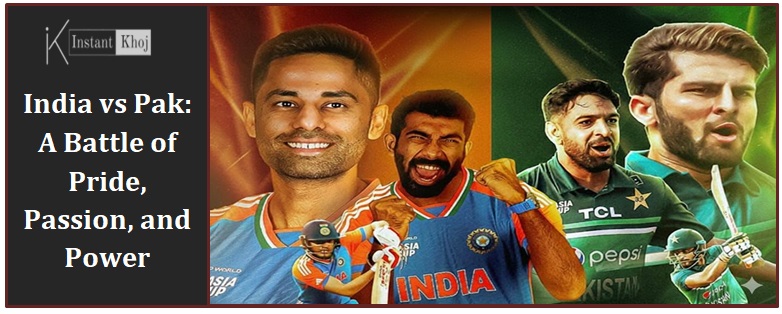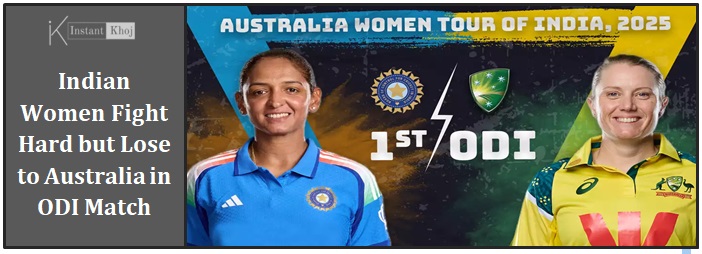Few sporting fixtures evoke as much passion, history, and tension as India vs Pakistan in cricket. It’s not just a game — it carries decades of rivalry, national pride, and emotional investment. Every time they meet, the eyes of millions turn in, commentary channels buzz, and the pressure on players intensifies.
The Stage: Asia Cup 2025 Final
On 28 September 2025, at the Dubai International Cricket Stadium, India and Pakistan faced off in a rare and highly anticipated final in the Asia Cup.
It was the first time the two sides met in an Asia Cup final.India came in unbeaten during the tournament, while Pakistan too had navigated their route to reach the summit clash.
In a high-stakes, high-tension environment, India managed to chase down Pakistan’s total and clinch the trophy — but not without plenty of drama.
Here’s a deep dive into what happened.
The Match in Detail: Innings, Key Moments & Turning Points
Toss & Decision
Pakistan won the toss and elected to bat first in a pressure-laden final. The decision to set a target was logical — put runs on the board and shift the burden to India’s chasing lineup.
Pakistan’s Innings: From Promise to Collapse
-
Pakistan began strongly, riding on solid starts and confidence. They reached a position of 113‑1, seemingly cruising toward a competitive total.
-
But then came a dramatic collapse: the next nine wickets fell for just 33 runs. India’s bowlers, especially spinners, exploited the pressure and the conditions.
-
Kuldeep Yadavwas the architect of the turnaround — he took 4 wickets for 30 in his spell.
-
Other bowlers also played their part: Jasprit Bumrah, Axar Patel, and Varun Chakravarthypicked up crucial wickets during the collapse.
-
Pakistan’s final total was 146 all out in 19.1 overs.
-
This dramatic disintegration turned momentum sharply in India’s favor.
India’s Chase: Calm Under Fire
-
India’s start was shaky — early wickets fell, and the scoreboard read 20 for 3 at one stage.
-
But a steady rescue came via Tilak Varma, who remained unbeaten on 69 off 53 balls. His composure under pressure anchored the chase.
-
Alongside him, Shivam Dubecontributed a crucial 33 runs, forming a 60-run partnership that helped steady the innings.
-
India crossed the finish line with 5 wickets in hand, reaching 150/5 in 19.4 overs.
-
The Man of the Match was Tilak Varma for his match-winning knock.
Key Players & Strategy
India
-
Kuldeep Yadav — His 4-wicket haul was the turning point. At a moment when Pakistan looked comfortable, he broke the backbone of their innings.
-
Tilak Varma — In a final, nerves can break batsmen; Varma held firm and steered the chase under deep pressure.
-
Support bowling — Every bowler chipped in. The spinners and pace bowlers shared the burden, and India’s depth in bowling was evident.
Pakistan
-
The top order gave hope, but they couldn’t convert starts into a match-winning total.
-
The collapse was sudden, brutal, and well-executed by India’s bowlers.
Strategically, Pakistan’s choice to bat first was not inherently wrong, but when your middle and lower order collapses, even a modest total becomes a massive hurdle in a high-pressure chase.
The Aftermath: Controversy and Celebration
-
India refused to accept the trophy from Mohsin Naqvi(ACC President & PCB Chairman) — he is also Pakistan’s Interior Minister — citing political tensions.
-
There were no handshakes between teams at toss or other formal occasions, keeping with the tense political backdrop.
-
The formal award ceremony was delayed, shortened, and eventually the trophy was quietly removed without India formally accepting it.
-
Indian players later staged a mock celebration with an imaginary trophy, which captured public imagination on social media.
Thus, while India’s on-field performance earned them the title, off-field dynamics added a layer of drama and complexity to the event.
Historical Context: India vs Pakistan Rivalry
To fully appreciate the weight of this match, one must understand the broader rivalry:
-
Cricket matches between India and Pakistan are rare in bilateral series due to political tension. Hence, whenever they meet — in World Cups, Asia Cups or Champions Trophies — the stakes feel higher.
-
In the T20I format, India has been dominant in recent years. For example, India’s record in head-to-head T20Is has seen them win 11 out of 14 in recent contests.
-
In broader formats, Pakistan historically held the edge in ODIs (Pakistan has 73 wins vs India’s 58 in ODIs) and in total matches across formats.
-
In ICC tournaments, India’s dominance over Pakistan in World Cups has been remarkable: India has defeated Pakistan in all their meetings in ODI World Cups (so far) and most in T20 World Cups.
-
But Pakistan has had high points, such as the emphatic victory in the 2017 Champions Trophy final over India.
Thus, each India vs Pak match carries historical weight, emotional baggage, and immense attention.
Why the 2025 Final Matters
-
It reinforced India’s current dominance over Pakistan in high-stakes T20 matches.
-
The off-field protest over the trophy presentation highlighted how politics and sport remain intertwined in this rivalry.
-
For Pakistani cricket fans, it’s a painful reminder of collapses under pressure and the need for restructuring.
-
For Indian cricket, it is validation — a strong mental performance and handling of pressure, which often define champions.
FAQs: India vs Pak — What Fans Want to Know
1. Why do India and Pakistan rarely play bilateral series?
Political tensions and diplomatic issues often prevent bilateral tours. As a result, the teams usually meet only in multi-nation tournaments under ICC or ACC.
2. What is India’s record vs Pakistan in T20Is?
In recent years, India has dominated. For instance, up to a recent juncture, India had won 11 out of 14 T20I matches against Pakistan.
3. Who has the upper hand overall in the rivalry?
While India leads in T20s and has had success in high-profile tournaments, Pakistan leads in total wins across formats historically.
4. What went wrong for Pakistan in the 2025 Final?
The collapse of 9 wickets for just 33 runs was fatal. Their middle and lower order could not handle pressure, and India’s bowlers found the breakthroughs at the right time.
5. Who turned the game in India’s favor?
Kuldeep Yadav’s 4-for and Tilak Varma’s composed chase were the two pivotal influences.
6. Did politics overshadow the match?
Yes, to an extent. India’s refusal to accept the trophy from the ACC President (who also holds a key Pakistani position) and avoidance of handshakes drew as much media attention as the cricket itself.
7. Will this win strengthen the India vs Pak rivalry further?
Possibly. India’s continued dominance may shift perceptions — some former players and fans question whether it remains a balanced rivalry. But emotionally and culturally, the match will always carry weight.
Final Thoughts: More Than Just a Scoreline
The India vs Pak fixture in the 2025 Asia Cup final was a microcosm of cricket meeting national identity, pressure meeting composure, and bowling meeting batting under stress. India’s ability to perform in the clutch — with swing, spin, shot selection, and temperament — earned them the prize.
But equally, this match underscores the challenges Pakistan must address: building depth, cultivating mental strength, and recovering from mid-innings collapses. The rivalry remains one of the most electric in world sport — and with every meeting, a new chapter is written.
Also Read:
Rinku Singh Seals Asia Cup 2025 Final for India vs Pakistan
Pakistan vs Bangladesh: Match Scorecard & Highlights
FollowCurrent AffairsonInstantkhoj for more latest stories and trending topics.




